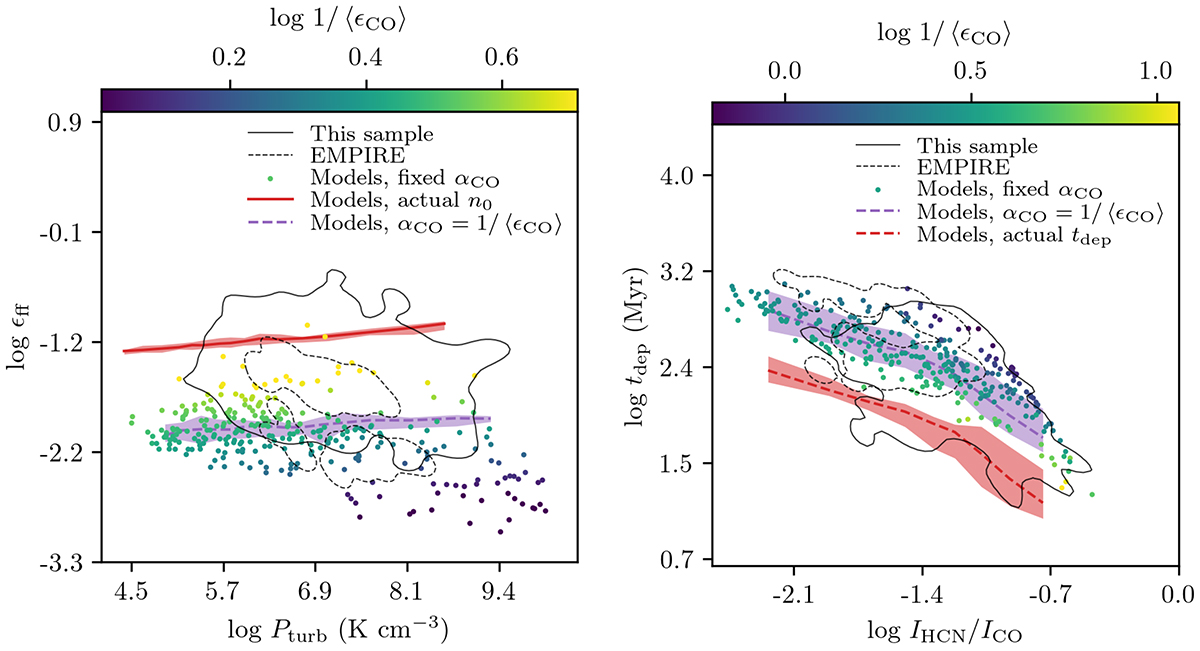Fig. 10.

Download original image
Comparisons between theoretical predictions and our radiative transfer modeling of the relationships between ϵff, Pturb, tdep, and IHCN/ICO. Left: Model efficiency per free-fall time as a function of turbulent pressure shown three ways: (1) using modeled ICO and a fixed CO conversion factor for gas surface density estimates (colored points), (2) using the actual theoretical ϵff and Pturb values (red line), and (3) using modeled ICO with ⟨αCO⟩ = 1/⟨ϵCO⟩ (purple trend line). The shaded regions represent the full range of model scatter. Estimates of these quantities from our sample of galaxies and the EMPIRE sample are shown as the solid black and dashed black contours, respectively. Right: Model depletion time as a function of HCN/CO ratio shown three ways, using the same approach. We find that the scatter produced by variations in CO emissivity can account for a significant portion of the scatter seen in observations. Additionally, the trend in ϵff with Pturb is dependent on the assumed CO conversion factor. Pixel-by-pixel estimates of αCO may be necessary for accurate studies of star formation trends. We note that the offset in ϵff and tdep between methods (2) and (3) is a result of the modeled CO emission missing a fraction of the lower surface density gas in our models, to CO-dark gas.
Current usage metrics show cumulative count of Article Views (full-text article views including HTML views, PDF and ePub downloads, according to the available data) and Abstracts Views on Vision4Press platform.
Data correspond to usage on the plateform after 2015. The current usage metrics is available 48-96 hours after online publication and is updated daily on week days.
Initial download of the metrics may take a while.


